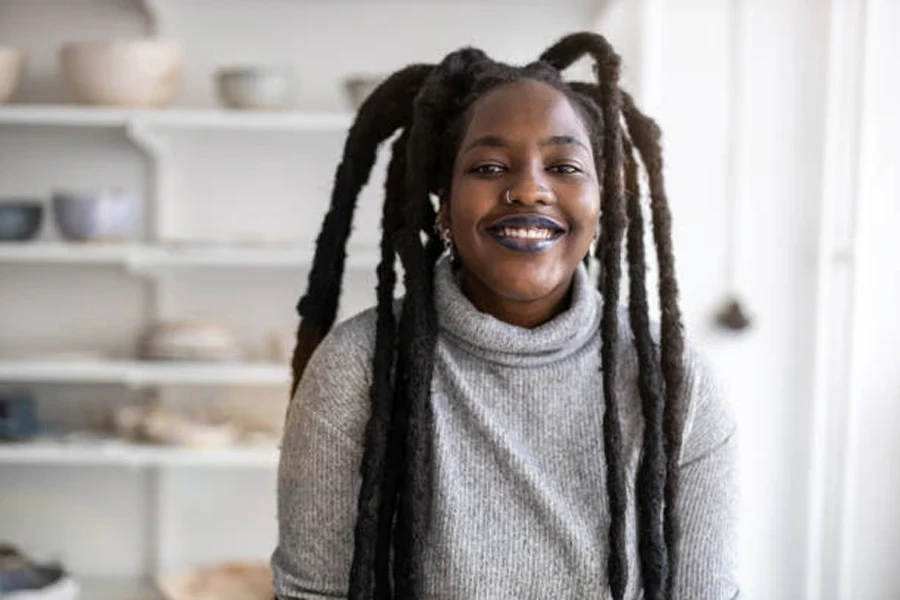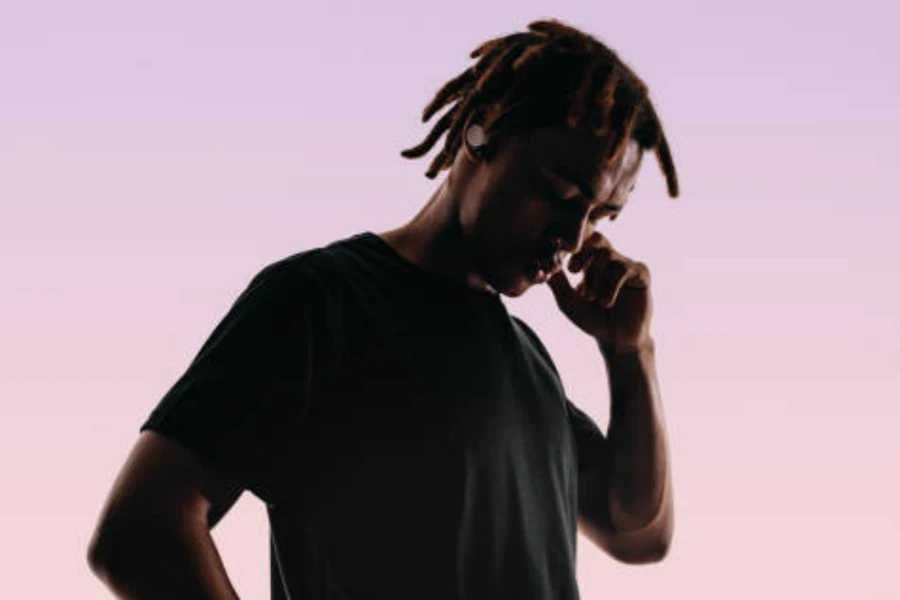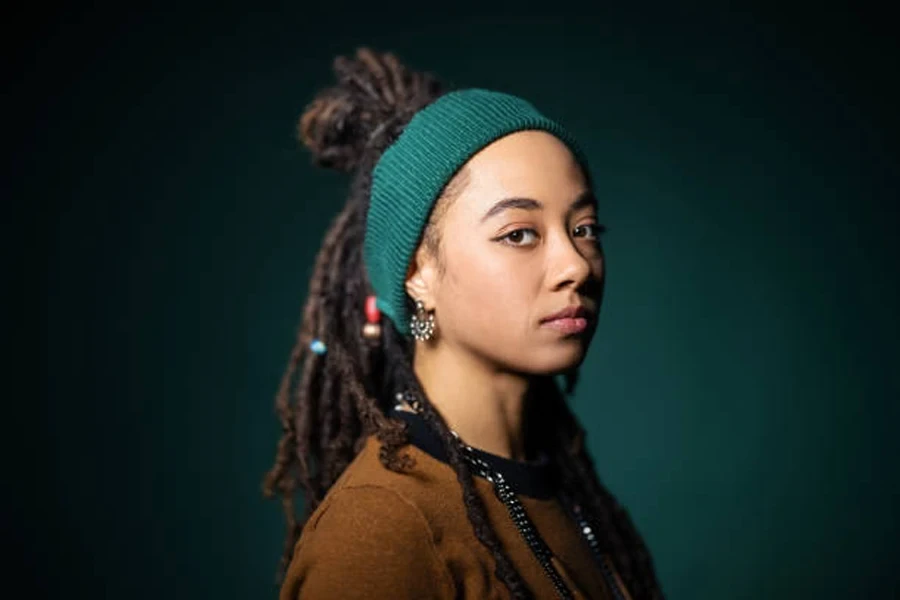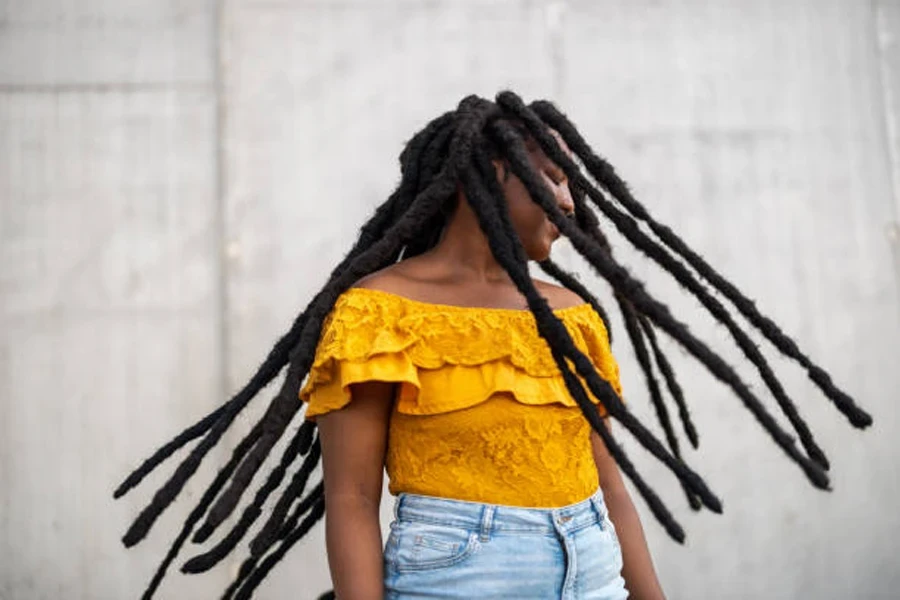In the ever-evolving world of hair fashion, a new trend is making waves: the wicks hairstyle. This distinctive look, characterized by thick, upright dreadlocks, has caught the attention of style enthusiasts and celebrities alike. Originating from South Florida’s vibrant cultural melting pot, wicks are more than just a hairstyle – they’re a statement. In this article, we’ll explore the roots of this trend, its unique features, popular styles, how to achieve the hairstyle, and how to maintain this eye-catching look. Whether you’re considering trying wicks or simply curious about the latest in hair fashion, read on to discover why this style is quickly becoming a hair phenomenon.
Table of Contents
1. The origin and cultural significance of wicks
2. What exactly are wicks?
3. Popular styles and variations of wicks
4. How to achieve the wicks hairstyle
5. Maintenance and care for wicks
6. Conclusion
The origin and cultural significance of wicks

Wicks, also known as “bonks” or “globs,” have their roots deeply embedded in the vibrant cultural landscape of South Florida. This distinctive hairstyle emerged from the creative fusion of African American and Afro-Caribbean influences, particularly within the Hip-Hop community. The origin of wicks can be traced back to the Afro-Caribbean population, with a strong Afro-Haitian presence, in Florida’s thriving Hip-Hop scene.
The cultural significance of wicks extends beyond mere aesthetics. For many wearers, it represents a connection to their heritage and a celebration of their identity. The style has become a symbol of cultural pride, reflecting the wearer’s ties to both African and Caribbean roots while embracing modern American urban culture. As the style gained popularity, it began to transcend its geographical origins, appearing in music videos, on red carpets, and in everyday street fashion across the United States.
The rise of wicks also highlights the ongoing evolution of dreadlock styles. While traditional dreadlocks have been worn for centuries in various cultures, wicks represent a modern, urban reimagining of this ancient hair tradition. This innovation showcases the dynamism of African American hair culture and its ability to continually create new forms of artistic expression. Today, wicks are not just a hairstyle but a cultural phenomenon, serving as a visual marker of community, creativity, and the ongoing dialogue between tradition and innovation in African American culture.
What exactly are wicks?

Wicks, at their core, are a unique variation of dreadlocks. Wicks are characterized by thicker, fewer in number, and typically more upright locs compared to traditional dreadlock styles. This distinctive appearance is achieved by combining multiple locs together, resulting in a bold, eye-catching hairstyle that stands out from conventional dreadlock arrangements.
The key feature that sets wicks apart is their thickness and upright nature. While traditional dreadlocks can vary in size but generally hang down, wicks are intentionally styled to stand up, creating a striking vertical silhouette. This upright habit is often achieved through specific styling techniques and can be further enhanced with styling products. The thickness of wicks can vary, but they are typically much wider than standard dreadlocks, sometimes reaching several inches in diameter.
It’s important to note that wicks are not just a styling choice, but a commitment. Like traditional dreadlocks, wicks form over time as hair locks together. However, the process of creating and maintaining wicks requires specific techniques and care. The result is a hairstyle that is both a personal statement and a work of art, reflecting the wearer’s dedication to their unique look and cultural expression.
Popular styles and variations of wicks

Wicks hairstyles offer a wide range of creative possibilities, allowing wearers to express their individuality. One popular variation is the “High-Top Wicks,” where the wicks are concentrated on the crown of the head, creating a striking vertical silhouette. This style is particularly favored in the hip-hop community and has been sported by several influential artists. Another common style is the “Full-Head Wicks,” where wicks cover the entire scalp, offering a bold and dramatic look.
Color plays a significant role in wick variations. While natural hair colors remain popular, many wick enthusiasts opt for vibrant, eye-catching hues. Some trendy color choices include blonde, red, and even multi-colored wicks, allowing for further personalization of the style. The length of wicks can also vary greatly, from short, compact styles to long, flowing wicks that can be styled in various ways.
Celebrity influence has played a crucial role in popularizing different wick styles. For instance, the rapper Kodak Black is often credited with bringing wicks into mainstream attention with his signature high-top style. Other variations include “Wick Ponytails,” where the wicks are gathered into one or multiple ponytails, and “Styled Wicks,” where the wicks are arranged in specific patterns or shapes on the head. These diverse styles showcase the versatility of wicks and their ability to cater to different personal tastes and occasions.
How to achieve the wicks hairstyle

Creating wicks is a process that requires patience, dedication, and proper preparation. Before starting, it’s crucial to prepare your hair and scalp. This preparation involves thoroughly washing your hair with a clarifying shampoo to remove any buildup, followed by deep conditioning to ensure your hair is well-moisturized. It’s also important to detangle your hair completely and trim any split ends. Some stylists recommend starting with hair that’s at least 6 inches long for the best results. Additionally, it’s wise to consult with a professional who specializes in wicks to discuss your hair type and the best approach for your desired look.
There are several methods to achieve this distinctive style, each with varying timelines. The combine method, which involves merging existing dreadlocks, can take anywhere from 3 to 6 months for the locs to fully fuse.The freeform method allows hair to naturally form into wicks with minimal manipulation. This process usually takes 1-2 years, resulting in unique, organic-looking wicks. The crochet method uses a special hook to interlock loose hair, creating neat wicks in a single salon session. It offers immediate results but requires regular maintenance. It may take 3 to 6 months for the wicks to fully settle and look their best. Wicks extensions involve attaching premade synthetic or human hair wicks to natural hair, allowing for instant length and volume. This method provides immediate results and can be customized for thickness and length, but requires professional installation and regular maintenance to keep the extensions secure and natural-looking. When having wicks done at a barber shop or salon, the initial installation process can take anywhere from 2 to 6 hours, depending on your hair length, thickness, and the specific technique used. For very thick or long hair, the process might even extend to 8 hours or require multiple sessions.
Maintenance and care for wicks

Proper maintenance is crucial for keeping wicks healthy and stylish. Regular washing is essential, but it requires a specific approach. Use a residue-free shampoo to cleanse the scalp and wicks thoroughly, being careful not to agitate the hair too much to prevent unraveling. It’s recommended to wash wicks every 1-2 weeks, depending on lifestyle and hair type. After washing, it’s crucial to ensure the wicks are completely dry to prevent mold growth.
Moisturizing is another key aspect of wick care. The thick nature of wicks can make it challenging for natural oils to travel down the hair shaft, potentially leading to dryness. To combat this, use light oils like jojoba or tea tree oil to moisturize the scalp and wicks. These oils not only provide hydration but also promote a healthy scalp environment. It’s important to apply these oils sparingly to avoid product build-up, which can weigh down the wicks and affect their upright style.
Styling wicks requires a delicate balance between maintaining their shape and avoiding damage. To keep wicks standing upright, many wearers use a technique called “palm rolling,” where the wicks are rolled between the palms to tighten and shape them. Some also use styling gels or waxes specifically designed for locs to help maintain the desired shape. However, it’s crucial to avoid over-manipulation, which can cause stress on the hair and scalp. For nighttime care, many wick enthusiasts recommend using a satin or silk bonnet to protect the hair and maintain moisture while sleeping.

Conclusion
Wicks hairstyles have emerged as a powerful form of self-expression, blending cultural heritage with contemporary urban fashion. From their South Florida origins to their current status as a global hair trend, wicks continue to captivate with their unique aesthetic and cultural significance. As we’ve explored, these thick, upright locs offer versatility in styling and color, allowing for personal creativity while maintaining a strong connection to African American and Afro-Caribbean roots. While maintaining wicks requires dedicated care and attention, the result is a striking, statement-making look that stands out in the world of hair fashion. As this trend continues to evolve, we can expect to see even more innovative interpretations of wicks, further cementing their place in the pantheon of iconic hairstyles. Whether you’re considering trying wicks or simply appreciating their artistry, there’s no denying the impact of this rising star in urban hair fashion.




